The Connection Between The Mayan Civilization (CHILAMBALAM) and (CHIDHAMBARAM) Tamil Nadu, INDIA
The connection between the Mayan Civilization is reconfirmed when one studies the Building of the Chichen Itza and the Temples of Tamilnadu in general and Chidambaram Temple of Lord Nataraja, a form of Lord Shiva, in particular. Nowadays, it is generally known that Columbus was not the first to discover America. In the course of centuries, almost every seafaring culture set out to the American continents. In the last few years, direct traces have been discovered which lead from India directly into the heart of the Maya Culture of Central America.
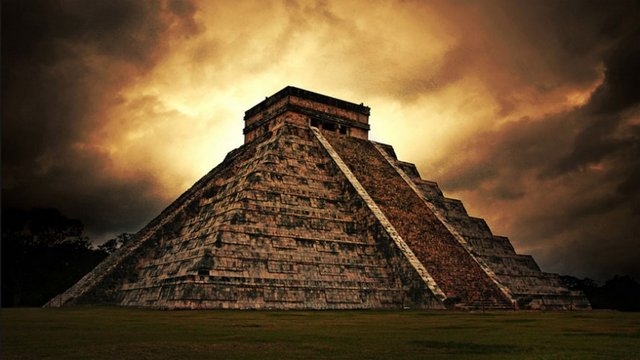
In the scriptures of South India, countries located south of India and their relation to the Vedic culture was mentioned. Following these traces, the renowned Vedic architect Dr. V. Ganapati Sthapati travelled to Peru in spring of 1995. His ancestors had built the big Shiva temple in Tanjore approximately a thousand years ago, and he himself continues to build temples all over the world according to the same principles of Vedic architecture. Merely studying old Sanskrit and Tamil scriptures on architecture caused him to assume that there had to be a connection between South America and India. Not only is its plot based exactly on the same geometric matrix, the Vasatipurusha Mandala, but also its form is identical with the South Indian Vimana (temple domes) even in details. Furthermore, there are amazing similarities as to measurements.
Dr. Sthapati discovered that the South-Indian measure/rule (Kishku yardstick approx. 33 inch) was used mainly in the Peruvian region of Kushku. Residential buildings were also built strictly according to the principles of Vasati, as developed by Maya Danava. Its plots, position of doors and windows, proportions, form of roofs, inclination angles of roofs, diameter of columns, width of walls etc. are perfectly in accordance with the rules of Vasati, which are still applied in 60% of all houses built in India nowadays.
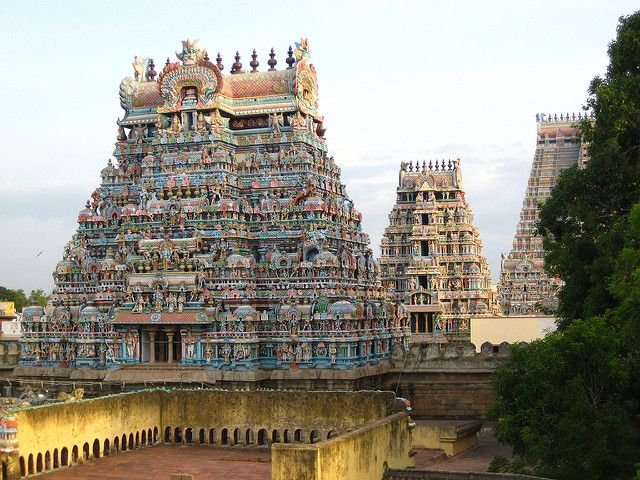
Did Maya Danava really travel from South India to Peru, or did he originally come from South America to become a famous architect in India later? This question can only be answered if we take into account the mystical personality of Maya Danava.
According to historical records of the Vedic culture & literature, Maya Danava, influence on man was prevailing for 8000 years. But at the same time, he is described as a being from another planetary system who is equipped with all sorts of mystic powers and with an astronomic life span. Had the same Maya Danava first worked as an architect in South India and published Vedic texts in order to contribute later to the development of the Maya Culture in Central America, which shows a number of similarities with the Vedic India also in fields different from architecture.
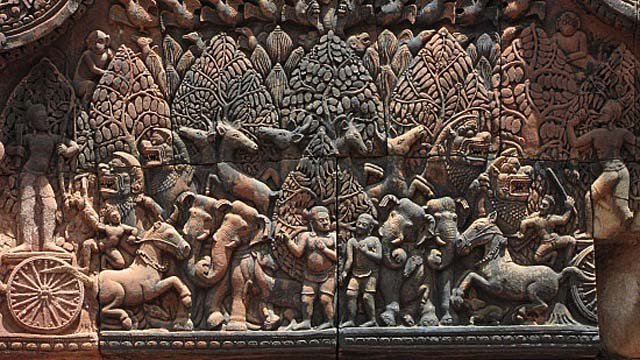
It is also very interesting to have a closer look at a linguistic comparison. Even today there are a number of words in the Maya language which indicate a relation to the Vedic culture. The Maya word Kâultanlini refers to the divine power and has obvious similarities to the word Kundalini which also refers to the life power and the power of consciousness. The term yoga can be found again in the Maya word Yokâhah, which means at the top of truth.
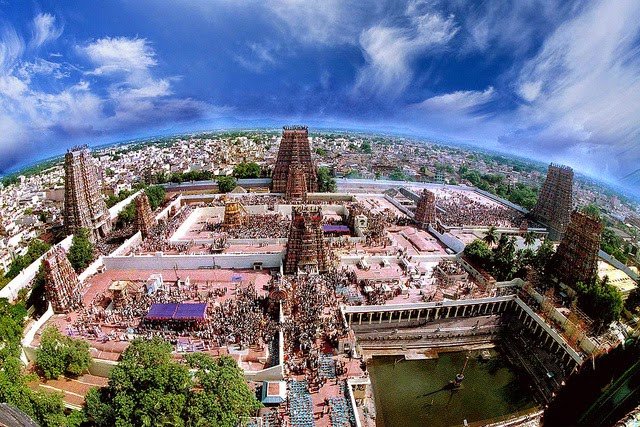
For our considerations, it is most interesting to investigate the connection between the Maya word Chilambalam which is the name for the temple room of the caste- pyramid Chichen Itza. This pyramid has the same plot as a South Indian temple vimana. Both are based on a grid consisting of 8 x 8 squares. This pyramid was built for astronomical purposes and during the vernal equinox (March 20) and the autumnal equinox (September 21) at about 3 P.M.. the sunlight bathes the western balustrade of the pyramid's main stairway. This causes seven isosceles triangles to form imitating the body of a serpent 37 yards long that creeps downwards until it joins the huge serpent's head carved in stone at the bottom of the stairway. The Mayan pyramid is also similar to the temple-pyramids of Cambodia, and is reminiscent of a prevalent concept in the Hindu world. It expresses the idea of erecting an artificial mountain, like the Indian Mount Sumeru, the Mountain ascending to Heaven. It is said that Garuda represents the Vedas and the solar deities, and Shesa Naga represents the watery deities. The serpent is of great significance in the Mayan culture also. A supreme example is the serpent of sunlight and shadow seen at Chichén Itzá. Kukulcan appears to be Shesa Naga and Garuda combined into one.
The temple structure at the top is exactly 1/4th of the base according to Vastu Vedic principles of Mayan. Most interesting is the name of the structure - chilambalam, meaning a sacred space. The Mayans worshiped the very concept of space, specifically a space made according to the modular system. This same idea is found in Hinduism in the sacred room in the center of the Chidambaram Siva Temple in South India, where space or akasha is worshiped-there is no idol. Mayan chilambalam refers to a sacred space, as does Tamil Chidambaram. Yok'hah in Mayan means "on top of truth," similar to yoga in Sanskrit.
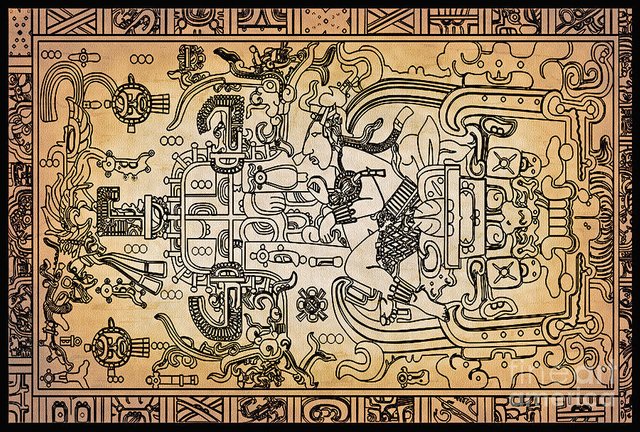
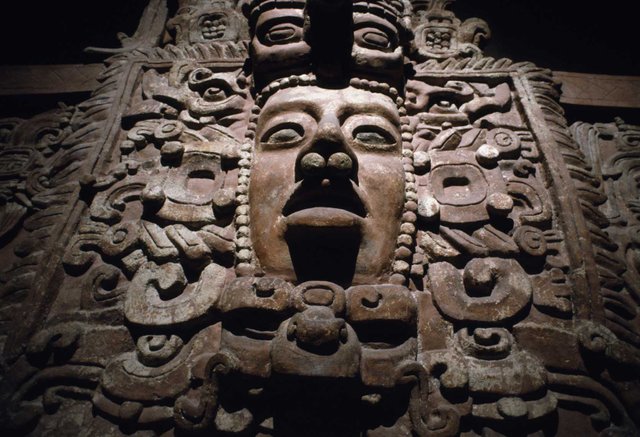
In Vasati such a square grid is called Manduka Mandala, the frog mandala. The centre is formed by a square made of four squares, which correspond to the Brahmasthana, the place of Brahma. At this location the divine energy is so strong that it is not suitable for people to live there. Both in the Vasati temples and in the Maya pyramids the most sacred place of the whole structure is located exactly in this square. The Mayas call this area Chilambalam, which means sacred room. This room is cubic and corresponds to the original form of room itself in Vasati.
Adhering to this principle, there is a Shiva-temple in South India in which the sacred room or the room of consciousness is being worshiped. This temple with immaculate proportions is called Chidambaram and ranks amongst the most famous Vasati temples of South India next to Shri Rangam. The same concept of the sacred room or hall of consciousness was called Chilambalam by the Mayas. Another perplexing parallel.
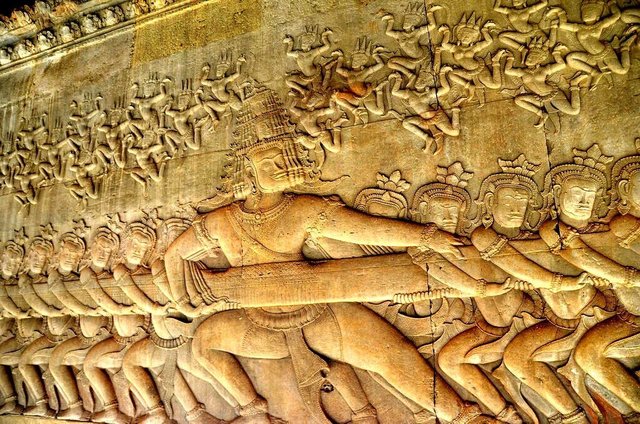
The term Maya itself may be from the word Maya, who is the sculptor illusionist of the Asuras.
Considering so many similarities, it is hard to believe in accident as an explanation. In addition, also the techniques applied by the Maya to erect their buildings and to hammer their huge stones for temples and pyramids are identical to those still taught and applied by Dr. Sthapati today. They have been described by Maya Danava in his books on Vasati.
Thanks for reading:)
Please upvote and follow me @rajdharma
Follow my Facebook page Kumari Kandam 75,000BCE